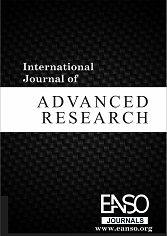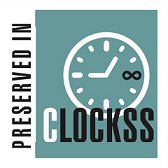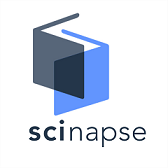Exploring Students’ Proficiency in Mathematical Symbolization
Abstract
This study examined the students’ proficiency in using mathematical symbols. The need to carry out the study was prompted by the Kenya National Examinations Council (KNEC) report that revealed dismal performance in mathematics. Therefore, the study objectives explored how symbols affect learning of mathematics, students’ perception of the role of symbols in mathematics learning and students’ use of mathematical symbols. The basis of the study relied on a conceptual framework of epistemological approach to notations and supportive and problematic conceptions as a lens that helped in dissecting the kind of symbol sense that exist amongst students. The study targeted mathematics teachers and form four students and was therefore conducted in a public secondary school in Rarieda Sub-County, Siaya County, Kenya. A qualitative approach with a case study research design was employed with sampling techniques such as convenience, purposive, and stratified sampling used to locate the research site and recruit participants. Data collection instruments included interview guides and document analysis protocol. Thematic analysis was used. The findings of the study showed that symbols influenced the learning of mathematics in terms of prior knowledge and symbol meanings at hand, thereby posing challenges in the learning of mathematics. Also, the findings revealed that students had a perception of the role of mathematical symbols in giving easy time in understanding concepts due to their precise and succinct nature, conserved time and assisted in the solution of mathematics problems and that use of symbols is profound in the linkage of concepts across topics, multiple representations and problem-solving. It may be recommended that prominence ought to be put on various ways of symbol representation to enable comprehension of symbols and meanings; better instructional techniques ought to be used to reduce the symbol cognitive load on students.
Downloads
References
Abdullahi, A. A., Senekal, A., Van Zyl-Schalekamp, C., Amzat, J., & Saliman, T. (2012). Contemporary discourses in qualitative research: Lessons for health research in Nigeria. African Sociological Review/Revue Africaine de Sociologie, 16(1), 19-40.
Akinyode, B. F., & Khan, T. H. (2018). Step by Step Approach for Qualitative Data Analysis. International Journal of Built Environment and Sustainability, 5(3), 163–174. https://doi.org/10.11113/ijbes.v5.n3.267
Arcavi, A. (1994). Symbol sense: Informal sense-making in formal mathematics. For the learning of Mathematics, 14(3), 24-35.
Baiduri. (2018). Mathematics Education students’ strategy in solving equations.
Bardini, C., & Pierce, R. (2015). Assumed Mathematics Knowledge: The Challenge of Symbols. International Journal of Innovation in Science and Mathematics Education (Formerly CAL-Laborate International), 23(1), Article 1. https://openjournals.library.sydney.edu.au/index.php/CAL/article/view/8485
Bowen, G. A. (2009). Document Analysis as a Qualitative Research Method. Qualitative Research Journal, 9(2), 27–40. https://doi.org/10.3316/QRJ0902027
Busetto, L., Wick, W., & Gumbinger, C. (2020). How to Use and Assess Qualitative Research Methods. Neurological Research and Practice, 2(1), 14. https://doi.org/10.1186/s42466-020-00059-z
Chin, K. E., & Pierce, R. (2019). University Students’ Conceptions of Mathematical Symbols and Expressions. EURASIA Journal of Mathematics, Science and Technology Education, 15(9). https://doi.org/10.29333/ejmste/103736
Chirume, S. (2012). How does the Use of Mathematical Symbols Influence Understanding of Mathematical Concepts by Secondary School Students? International J. Soc. Sci. & Education, 3(1), 35–46.
Cobb, P. (2002). Modeling, Symbolizing, and Tool Use in Statistical Data Analysis. In K. Gravemeijer, R. Lehrer, B. Van Oers, & L. Verschaffel (Eds.), Symbolizing, Modeling and Tool Use in Mathematics Education (pp. 171–195). Springer Netherlands. https://doi.org/10.1007/978-94-017-3194-2_11
Creswell, J. W. (2009). Research Design: Qualitative, Quantitative, and Mixed Methods Approaches (3rd ed). Sage Publications.
Crowe, S., Cresswell, K., Robertson, A., Huby, G., Avery, A., & Sheikh, A. (2011). The Case Study Approach. BMC Medical Research Methodology, 11(1), 100. https://doi.org/10.1186/1471-2288-11-100
De Cruz, H., & De Smedt, J. (2013). Mathematical Symbols as Epistemic Actions. Synthese, 190(1), 3–19. https://doi.org/10.1007/s11229-010-9837-9
Fonger, N. L. (2019). Meaningfulness in representational fluency: An analytic lens for students’ creations, interpretations, and connections. The Journal of Mathematical Behavior, 54, 100678.
Given, L. M. (Ed.). (2008). The Sage Encyclopaedia of Qualitative Research Methods. Sage Publications.
Godino, J. D., & Batanero, C. (2003). Semiotic functions in teaching and learning mathematics. Educational perspectives on mathematics as semiosis: From thinking to interpreting to knowing, 149-167.
Gray, E., & Tall, D. (1994). Duality, Ambiguity, and Flexibility: A ‘Proceptual’ View of Simple Arithmetic. Journal for Research in Mathematics Education, 25(2), 26. https://doi.org/10.2307/749505
Jiew, F. F., & Chin, K. E. (2020). Supportive and problematic conceptions in making sense of multiplication: A case study. The Mathematics Enthusiast, 17(1), 141-165.
Kaput, J. J., & Shaffer, D. W. (2002). On the Development of Human Representational Competence from an Evolutionary Point of View. In K. Gravemeijer, R. Lehrer, B. Van Oers, & L. Verschaffel (Eds.), Symbolizing, Modeling and Tool Use in Mathematics Education (pp. 277–293). Springer Netherlands. https://doi.org/10.1007/978-94-017-3194-2_17
Kenney, R. (2007). Students’ uses and interpretations of symbols when solving problems with and without a graphing calculator. In Proceedings of the 29th annual meeting of the North American chapter of the International Group for the Psychology of Mathematics Education (pp. 160-163).
Kharde, U. D. (2016). The symbolic language of mathematics. EXPLORER, 1(1), 117.
KIE. (2002). Secondary Education Syllabus. KIE, Nairobi, Kenya, 2.
Kilpatrick, J., Swafford, J., Findell, B., National Research Council (U.S.), & Mathematics Learning Study Committee. (2001). Adding it up: Helping children learn mathematics. National Academy Press. https://openlibrary.org/books/OL17062503M
KLB. (2008). Secondary Mathematics Teacher’s Guide Book Four (Third Edition). Kenya Literature Bureau.
KNEC. (2020). The year 2019 KCSE Examination Report. Mathematics and Science, 1. Nairobi, Kenya.
Lodico, M. G., Spaulding, D. T., & Voegtle, K. H. (2010). Methods in educational research: From theory to practice (Vol. 28). John Wiley & Sons.
Mamolo, A. (2010). Polysemy of symbols: Signs of ambiguity. The Mathematics Enthusiast, 7(2), 247-262.
Mbugua, Z. K. (2012). Influence of Mathematical Language on Achievement in Mathematics by Secondary School Students in Kenya. International Journal of Education and Information Studies, 2(1), 1–7.
McGrath, C., Palmgren, P. J., & Liljedahl, M. (2019). Twelve Tips for Conducting Qualitative Research Interviews. Medical Teacher, 41(9), 1002–1006. https://doi.org/10.1080/0142159X.2018.1497149
Moschkovich, J. (2006). Using Two Languages When Learning Mathematics. Educational Studies in Mathematics, 64(2), 121–144. https://doi.org/10.1007/s10649-005-9005-1
Mulwa, E. C. (2015). Difficulties Encountered by Students in the Learning and Usage of Mathematical Terminology: A Critical Literature Review. Journal of Education and Practice, 6(13), 27-37.
Mulwa, E.C. (2014). The Role of the Language of Mathematics in Students’ Understanding of Number Concepts in Eldoret Municipality, Kenya. International Journal of Humanities and Social Science, 4(3), 11.
Mweni, N. T. (2015). Relationship between affective factors and achievement in Mathematics among secondary school students in Ganze District. Kilifi County Kenya (doctoral dissertation, Kenyatta University).
Nogueira de Lima, R., & Tall, D. (2008). Procedural Embodiment and Magic in Linear Equations. Educational Studies in Mathematics, 67(1), 3–18. https://doi.org/10.1007/s10649-007-9086-0
Pierce, R., & Stacey, K. (2004). Monitoring Progress in Algebra in a CAS Active Context: Symbol Sense, Algebraic Insight and Algebraic Expectation. International Journal for Technology in Mathematics Education, 11(1).
Prayitno, l. L., Subanji, S., Susiswo, S., & Abdur, A. A. (2020). Exploring student’s representation Process in Solving Ill-Structured Problems Geometry. Participatory Educational Research, 7(2), 183-202. https://doi.org/10.17275/per.20.28.7.2
Robinson, O. C. (2014). Sampling in Interview-Based Qualitative Research: A Theoretical and Practical Guide. Qualitative Research in Psychology, 11(1), 25–41. https://doi.org/10.1080/14780887.2013.801543
Rubenstein, R. N., & Thompson, D. R. (2001). Learning Mathematical Symbolism: Challenges and Instructional Strategies. Mathematics Teacher, 94(4), 265–271.
Scott, D., & Morrison, M. (2006). Key ideas in educational research. Continuum.
Serfati, M. (2005). The constitution of symbolic mathematics thought. An epistemological study.16.
Skemp, R. R. (1976). Relational understanding and instrumental understanding. Mathematics teaching, 77(1), 20-26.
Sullivan, P. (2013). Characterizing the Nature of Students’ Feature Noticing-and-Using with Respect to Mathematical Symbols across Different Levels of Algebra Exposure. Pennsylvania State University.
Tall, D. (2013). How humans learn to think mathematically. Cambridge University Press: USA.
Ulusoy, F., & Argun, Z. (2019). Secondary School Students’ Representations for Solving Geometric Word Problems in Different Clinical Interviews. International Journal of Education in Mathematics, Science and Technology, 7(1), 73–92.
Walliman, N. (2010). Research Methods: The Basics (1st Ed.). Routledge. https://doi.org/10.4324/9780203836071
Copyright (c) 2022 Peter Okoth Oyoo

This work is licensed under a Creative Commons Attribution 4.0 International License.




























